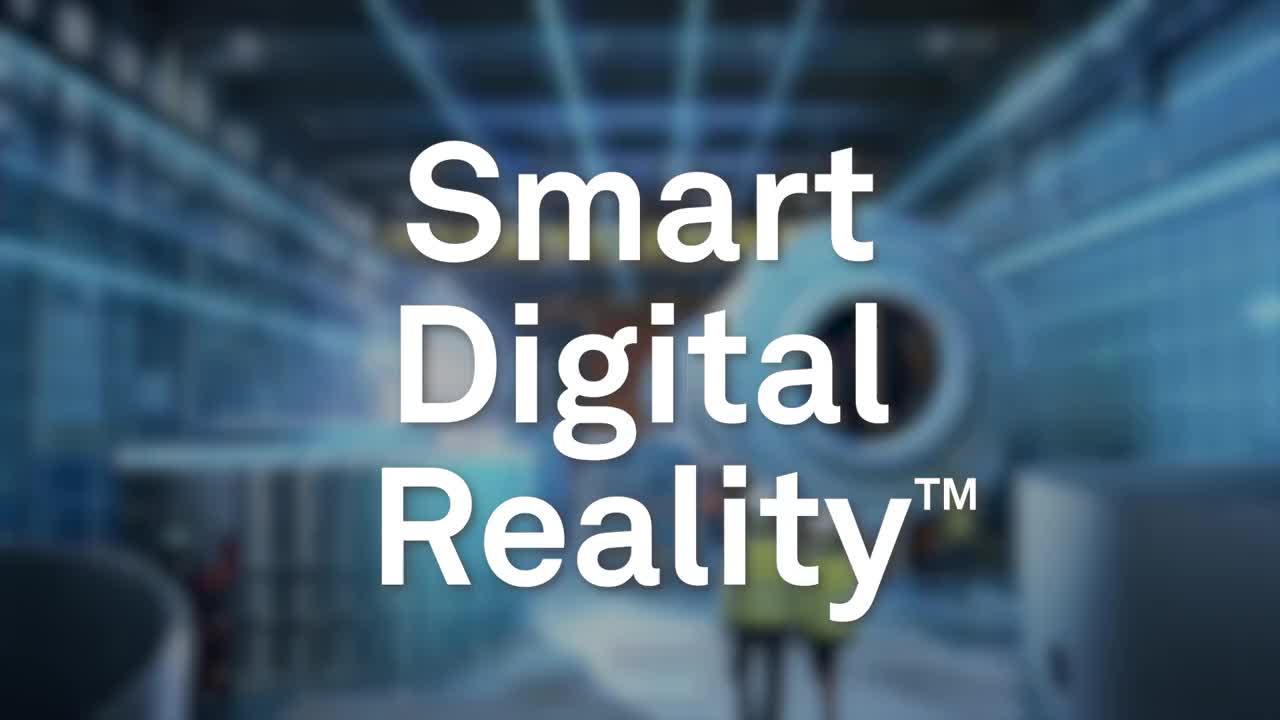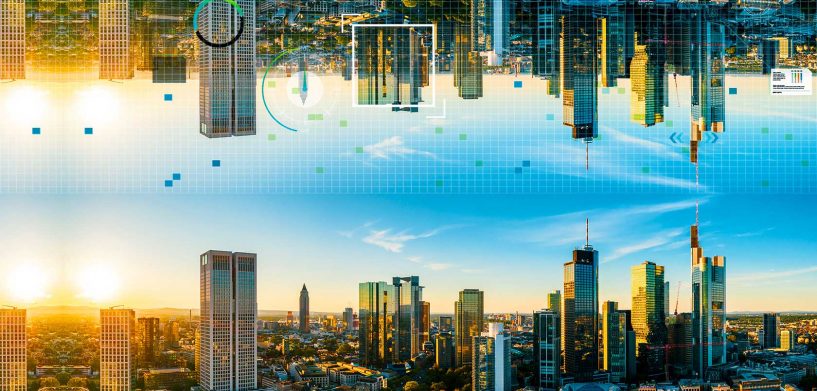An exploration of the digital transformation that’s occurred within our lifetime. We look back at the historical precursors to Hexagon’s Smart Digital Reality™, and some of the people and ideas that shaped the future of real-time 3D worlds with digital reality technology.
A significant digital transformation has occurred within our lifetime, and reality is not what it used to be. The often-quoted axiom that “you can’t manage what you can’t measure” created a new rigor around “reality”, requiring that we create, capture, connect and comprehend data for many aspects of our physical world.
This transformation didn’t take place overnight, nor was what’s been accomplished easy. We can trace a line from the groundbreaking work of early 20th-century mathematicians who contemplated digitalisation, to the earliest concepts behind digital simulation and the conceptual forerunners of the digital twin. Let’s take a closer look at some of the people, ideas and groundbreaking technologies that drove the evolution of fundamental binary data into digital twins, digital realities, and ultimately, the Smart Digital Reality™.
Math, machines and mimicking reality
Conceptual precursors to digital realities can be found early in the 20th-century work of Alan Turing (1912-1954), who contemplated the possibility of machines replicating human behavior, as well as John Von Neumann (1903–1957), who conceived of ‘intelligent agents’ that could mimic their organic counterparts via simulation of physical settings.
In 1948, Bell Labs mathematician Claude Shannon (1916 – 2001) authored a paper entitled, “A Mathematical Theory of Communication” in which he envisioned the process of digitalisation – the creation of digital copies of physical source materials (representations of objects, documents, etc.).
Nicholas Negroponte, Chairman Emeritus of Massachusetts Institute of Technology’s renowned Media Lab, authored the 1995 bestseller Being Digital. One of the primary tenets of this publication is that as we continue to move into a technological future, the bits (or 1’s and 0’s) that represent a digital thing at its fundamental level are becoming just as important and valuable as the atoms that comprise its physical equivalent. Negroponte asserted that decentralising, globalising, harmonising and empowering are the four qualities of the digital age. He also emphasised that while the physical world was rapidly converging with a digital one, the bulk of our experiences were still physical in nature.
A mirror world emerges: the digital twin
The work of these and many other digital pioneers gave rise to the ‘digital twin’, which has since evolved from a mere 1:1 static digital replica of something in the physical world to a more intelligent twin embedded with dynamic information about its physical counterpart.
Michael Grieves, currently Chief Scientist and executive director of the Digital Twin Institute, is credited with developing the digital twin concepts in 2002 and elaborating on best practices for bringing digital transformation to the product lifecycle (design, manufacture and support). Grieves’ associate John Vickers, the principal technologist at NASA’s National Center for Advanced Manufacturing, coined the term ‘digital twin’ for this emerging field. It first appeared in NASA’s draft version of its technology roadmap in 2010. NASA was the first to formally define the term. They described it as “an integrated multi-physics, multi-scale, probabilistic simulation of a vehicle or system that uses the best available physical models, sensor updates, fleet history and more, to mirror the life of its flying twin.”
In a 2021 interview, Dr. Grieves spoke about the utility of digital twin as a means to fail in the digital world first, stating “This is where I sort of differ from industry 4.0. They have adopted this perspective of ‘how do I take a failure and drop the amount of time to remediate it.’ But from my perspective, I never want to have a failure. I want to predict that something is going to fail and fix it first. So, if I have a glitch on a factory floor, I’d like to know that in 4 hours there’s going to be a bottleneck in this particular area and go fix it.”
Digital twins: the new commodity
Simply put, a digital twin is a digital representation of reality that can be leveraged to optimise its physical counterpart with the help of data. The twin can be anything from a complex asset such as a power plant to a process (e.g., a supply chain), system (e.g., transportation network) or physical environment (e.g., construction site). The direct connection to the physical world and its physical twin is the key ingredient to this optimisation.
Today, digital twins are built to represent everything from human organs to aircraft engines, manufacturing lines, power plants, buildings and even entire metropolises. Creating digital twins, however, requires organisations to leverage sophisticated capabilities in the areas of reality capture, data science, artificial intelligence (AI), machine learning and edge computing.
Digital twin technology is becoming increasingly vital in our world. A 2022 forecast from Fortune Business Insights projects that the global digital twin market size will reach EUR 96 billion in 2029, at a CAGR of 40.6%.
Some even maintain that Industry 4.0 – the fusion of advances in reality capture, AI, the Internet of Things (IoT), robotics and more – is only possible when digital twins are leveraged. Hexagon has long appreciated the value of digital twins and sees them as a critical ingredient to what’s most needed in today’s world – a means to empower industry to do its best work, sustainably and profitably.
Hexagon’s value proposition: the Smart Digital Reality
Hexagon’s value proposition is to empower a new paradigm for customers – to advance the utility and potential of the digital twin by putting data to work, in real-time and autonomously. We call it the Smart Digital Reality.
Like any digital twin, a smart digital reality is grounded in reality, meaning it has an exact 1:1 relationship to the physical world. However, smart digital realities have three critically important and intrinsic traits that are not automatically associated with digital twins: they are data rich, real-time and autonomously intelligent.
Data rich: A digital twin is only as valuable as the intelligence it possesses. When informed by unlimited data sources – from IoT sensors and historical data to design and simulation data or input from human operators – the more intelligent it can become.
Real-time: The most valuable digital twins are continuously informed by updated or new data, in real-time. This is the only way to provide complete line-of-sight to ever-changing situations. When in real-time, physical world changes can be immediately reflected in digital counterparts. And vice-versa; what we learn or simulate in the digital world can be actioned immediately in the physical world.
Autonomously intelligent: Industry 4.0 and the IoT era have delivered on the promise of vast amounts of useful data. But instead of generating trillions in value, the data deluge has become the invisible waste product of industry. The sheer volume of data generated daily by connected things goes far beyond the capacity of normal human processing, defying our ability to see, understand and put it all to work. Smart digital realities overcome this data leverage gap through autonomy.
While technology provides the framework for accelerating our ability to harness data in real-time, autonomy levels the playing field – leveraging artificial intelligence and machine learning to dissect, analyse, synthesise and make sense of all that data. When autonomy augments human capabilities – sometimes taking them out of the equation completely on certain tasks or decisions – we can eliminate human errors and mistakes.
Additionally, scenario simulations in the digital world allow us to identify mistakes and failures to avoid in the real world, empowering customers to achieve enormous gains in quality, productivity, efficiency, safety, and sustainability more easily.
In summary:
Definition: Smart digital realties are real-time, 3D digital worlds that are data rich and autonomously intelligent – providing complete line-of-sight to any dynamic or unpredictable situation in order to understand what was and what is, and to see what could be, what should be and what will be. They are made possible by integrated, sensor-software systems that connect customers to 1:1, precise, 3D replicas of physical world places, objects and processes. They move industry beyond automation to autonomy, providing the ability to act independent of human interaction.
Characteristics:
- Two worlds, one reality: 1:1 precise 3D digital representation of the physical world, where the lines between physical and digital blur into one
- Data rich: infused with unlimited physical and digital world data inputs, where all data is available, live and in context – in one place
- Real-time: continuously informed by and updated with new data
- Workflow-driven: brings speed and agility to any workflow by integrating the right data in the right place at the right time
- Autonomously intelligent: AI powered insight enables real-time learning and scenario simulation to determine and implement physical world actions independent of human intervention
How Hexagon enables the Smart Digital Reality
Hexagon has a unique set of five core technology competencies critical to capturing and fusing the physical and digital worlds and fully connecting and leveraging data to create and deliver value. When leveraged together, they add up to the smart digital reality, undoubtedly the most dynamic and powerful use of data in history.
The scale and scope of these competencies within a single enterprise are without precedent and unique to Hexagon:
- Reality capture: Our reality capture technologies enable the digital capture of the physical world – from distance measurements (point A to point B) to attributes of physical world objects (e.g., auto parts) to the creation of entire physical world environments in 3D (e.g., complete infrastructure of a city).
- Positioning: Our positioning technologies enable the location, tracking, navigation and/or control of anything, anywhere, powering intelligent positioning ecosystems in vital industries and safety-of-life applications.
- Design and simulation: Our design and simulation technologies enable the design or simulation of real-world scenarios – from computer aided design of complex facilities and buildings to the simulation of manufacturing and assembly processes and autonomous driving.
- Location intelligence: Our location intelligence technologies enable active, geo-referenced, situational intelligence for any application, providing complete line of sight to dynamic situations, from anywhere (i.e., remotely).
- Autonomous technologies: Our autonomous technologies add the power of machine learning, AI and edge computing – embedding autonomous learning, decision-making and action into any system, process or workflow (i.e., solutions adapt to dynamic environments to get smarter over time).

Smart digital realities in the metaverse
At an overarching level, the metaverse is limitless digital reality platform, comprised of interconnected 3D worlds where users can explore, interact, create content and share information.
Smart digital realities relate to the metaverse whenever applications require the real, physical world to be mirrored, viewed and understood within this 3D digital world with precision and accuracy. This is unique compared to the most popular definitions of the metaverse, which currently centre around social and immersive experiences, like gaming and entertainment, where a direct connection to the physical world isn’t necessary.
On the contrary, in more professional use cases, such as civic and industrial applications where an exact real-time replica of the real world is critical, smart digital realities will be critical to enabling users to create, add, derive or deliver value across this emerging platform.
Forward into the future
Hexagon’s Chief Technology Officer, Burkhard Boeckem, describes Hexagon as an all-encompassing digital twin house: “By enabling real-time data capture and analyses and bringing the freedom of autonomy to the digital twin, we transform a twin’s function and utility far beyond a static, single source of truth that can reduce and even eliminate human intervention. This is when data does its greatest work, empowering our customers in ways that go far beyond what was ever possible.”
Digital reality solutions continue to evolve through innovative developments that reduce operational costs and risks, enable prediction and prevention, increase productivity and efficiency and minimise waste and pollution. As industries move forward in their digital transformation journeys, we can expect to see more technologies that process data faster with even more powerful AI.
As these innovations progress, Hexagon will continue improving its smart digital reality capabilities, adding to its record of accomplishments that distinguish it as a leader. This includes optimising quality, productivity, efficiency and safety – profitably, while reducing risk, waste, and margin erosion.
We’re excited to continue leading the way for digital twins into the future, putting data to work – in real-time and autonomously – to bring predictability to previously unpredictable scenarios. We hope you’ll join us on this journey.

















